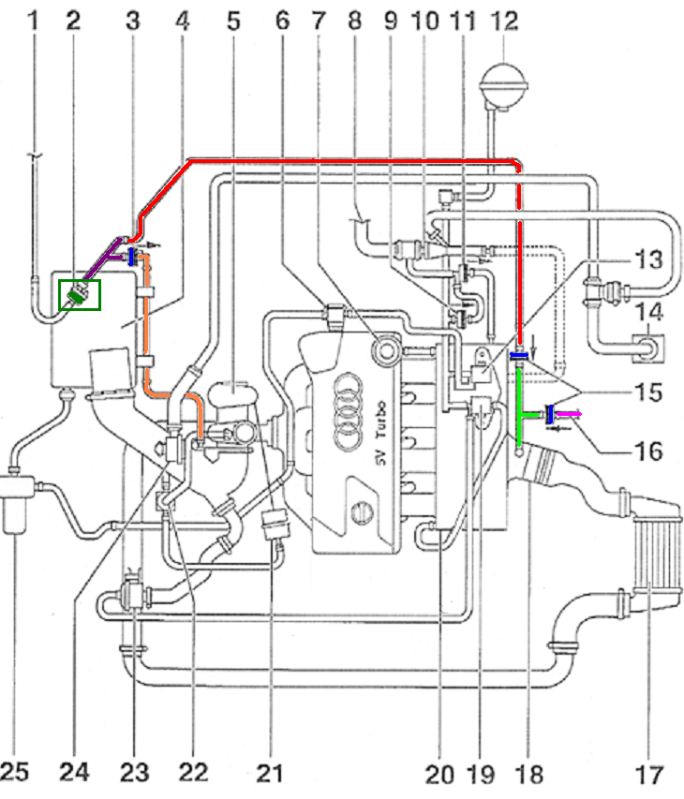as old guy stated...venting straight to the atmosphere is bad for our motors. when venting directly to the atmosphere, think of it this way...your engine once shut off is expelling hot air and fumes. once your engine cools down the air will compress slightly and suck outside air through your vent tube back into the engine. since outside air has more moisture than any air that has been in recirculation, you will essentially be adding water in small doses to your oil. water in small doses to your oil will cause sludge and froth. most people think oh my catch can caught all this nasty stuff. in actuality the catch can the first stop to and from the engine and outside air. all that nasty stuff you see in your catch can is water from the outside air being mixed with your engine oil.
i ended up not removing much from my car when i worked on it recently. i had spent maybe 500 dollars in hoses and a catch can with plans to rebuild my entire system. i was planning to have "catched oil" reintroduce itself into the crankcase as an entirely closed system. to be upfront about things, there really is not a good place to drain back the oil aside from adding a secondary crankcase breather. eventually when i go big turbo i will be using the oil drain back tee'ed for my catch can drain back.
another thing most of you don't realize is, adding negative pressure to your crank case is a good thing. negative pressure means less work your pistons and crankshaft have to output to spin. negative pressure promotes positive ring sealing. with a OEM type configuration you are getting close to a neutral environment. with venting to the atmosphere, you honestly need to vent quite more than one port to the atmosphere. at that point eventually you'll get to a situation where more oil is being lost than it is worth doing. my old race car would sign around 9,500rpm so much at the end of a track day, i would be 1 quart short of oil. eventually you learn, recirculating/filtering/whatever is definitely a good thing for your engine in the long run. for your pocket book as well.
i ended up not removing much from my car when i worked on it recently. i had spent maybe 500 dollars in hoses and a catch can with plans to rebuild my entire system. i was planning to have "catched oil" reintroduce itself into the crankcase as an entirely closed system. to be upfront about things, there really is not a good place to drain back the oil aside from adding a secondary crankcase breather. eventually when i go big turbo i will be using the oil drain back tee'ed for my catch can drain back.
another thing most of you don't realize is, adding negative pressure to your crank case is a good thing. negative pressure means less work your pistons and crankshaft have to output to spin. negative pressure promotes positive ring sealing. with a OEM type configuration you are getting close to a neutral environment. with venting to the atmosphere, you honestly need to vent quite more than one port to the atmosphere. at that point eventually you'll get to a situation where more oil is being lost than it is worth doing. my old race car would sign around 9,500rpm so much at the end of a track day, i would be 1 quart short of oil. eventually you learn, recirculating/filtering/whatever is definitely a good thing for your engine in the long run. for your pocket book as well.














 Reply With Quote
Reply With Quote





 Well, it looks like life is all downhill from here.
Well, it looks like life is all downhill from here.







Bookmarks